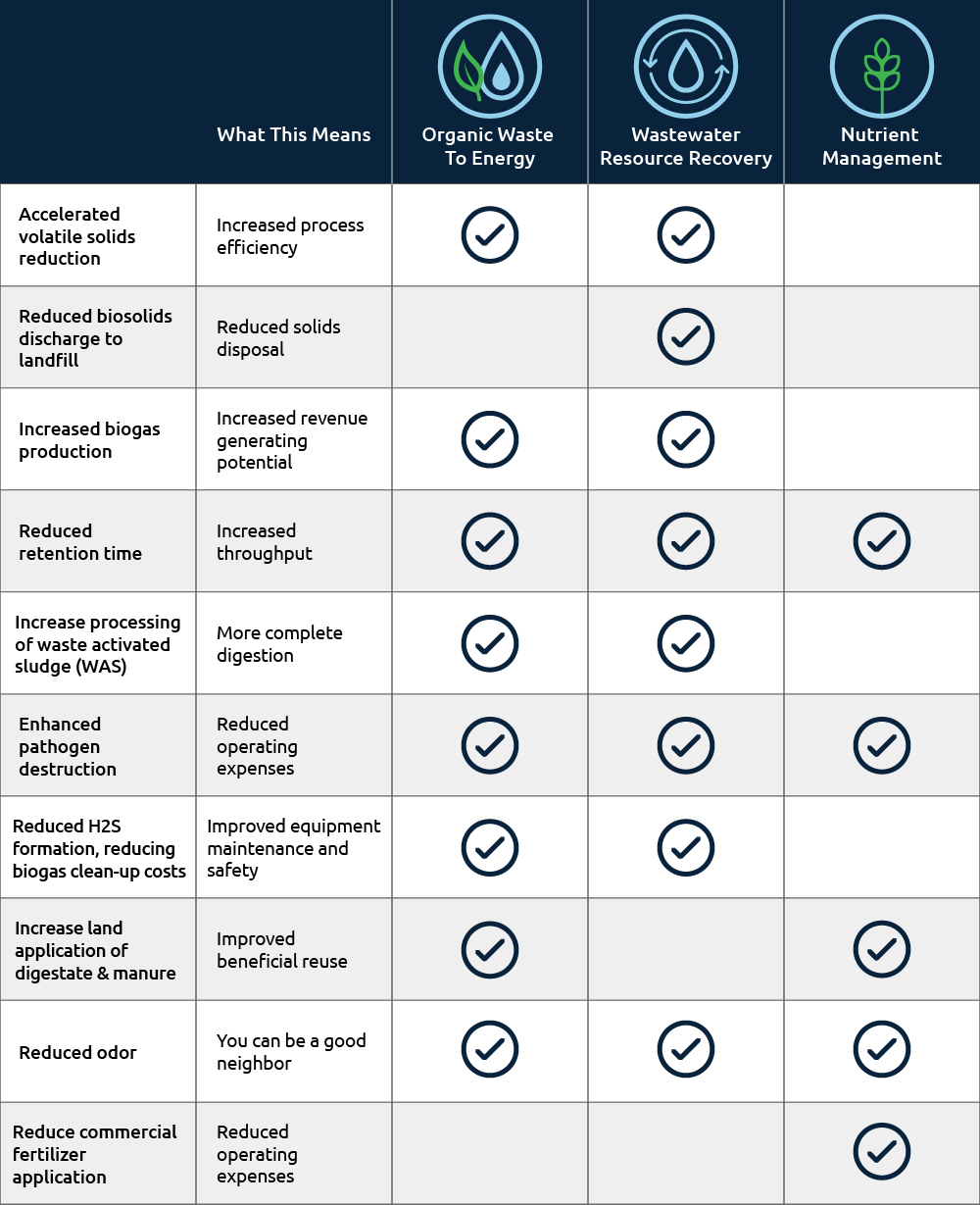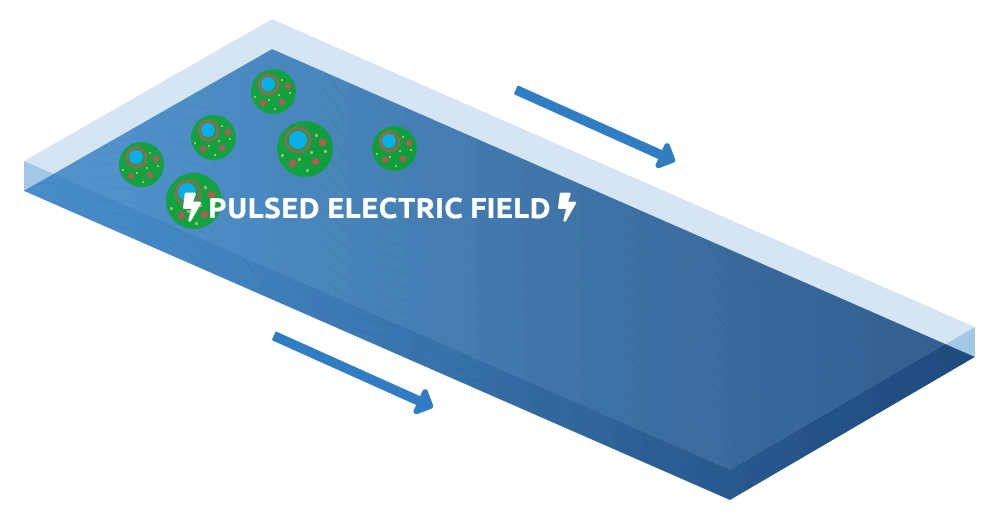Pulsed Electric Field Treatment
Environ’s innovative, cost-effective pulsed electric field technology accelerates the breakdown of organic material in liquid waste streams which results in more efficient wastewater resource recovery systems, organic liquid waste-to-energy systems, and nutrient recovery.
Problems we can help you solve:
- Reduce operating costs
- Reduce capital expense for new or existing systems
- Increase revenue potential
- Increase Solids Separation
- Improve regulatory compliance
Who We Serve
We work directly with end users who have intimate operations knowledge and are close to the challenges they have with their plant and process systems to create the following:


Innovation
Our novel pulsed electric field technology performs cell lysis.The technology works by producing precisely shaped electrical pulses within treatment tubes through which waste liquids are passed. These electrical pulses disrupt ionic bonds, rupture organic cells, accelerate biological processes, and kill pathogens within the treated waste liquid.
Historically, attempts to perform cell lysis using electricity have required large amounts of power; as such, the groundbreaking innovation of this technology is the ability to achieve cell lysis with less than 3 watts per gallon on average. This minimal power requirement is in orders of magnitude less than competing technologies (i.e. combinations of heat, pressure, mechanical shearing, chemical lysing, and/or high-voltage electrical pulses), which keeps the parasitic power demand low and improves the economic viability of the application. There are no other known cell lysis technologies that perform to this degree of efficiency.

Novel Pulsed Electric Field Technology Making Headway at Environ
Environ recently completed a first-of-kind full-scale demonstration of a novel technology employing electric pulsing to enhance the anaerobic digestion process in wastewater/liquid treatment.
The innovative cell lysis technology works by producing precisely shaped electrical pulses within treatment tubes through which waste liquids pass . These electrical pulses disrupt ionic bonds, rupture organic cells, accelerate biological processes, and kill pathogens within the treated waste liquid. The cell lysis technology is unique in that it uses low-power pulses, thus consuming far less power per unit of the treated material . Why does this matter? Steve Ostanek, President of Neundorfer and Environ, says “other methods, which include chemical, mechanical, and heating, all increase the operating costs for a facility . This technology has the potential to significantly reduce operating costs and achieve better results, and improve regulatory compliance.”
